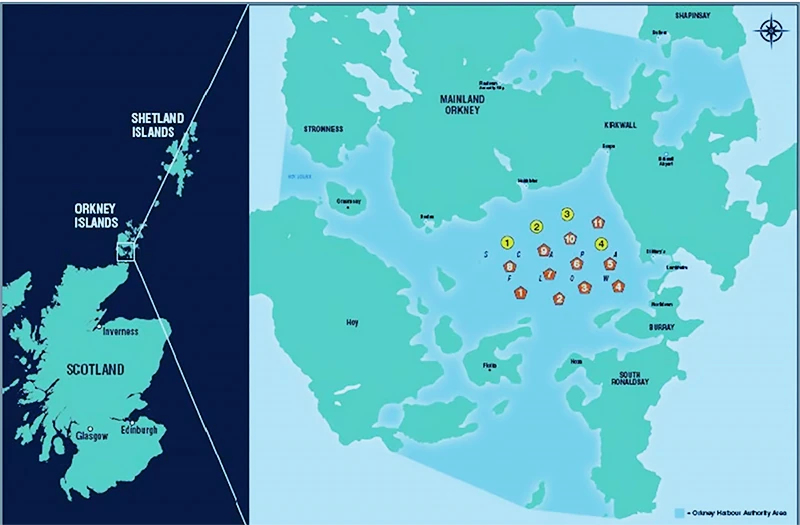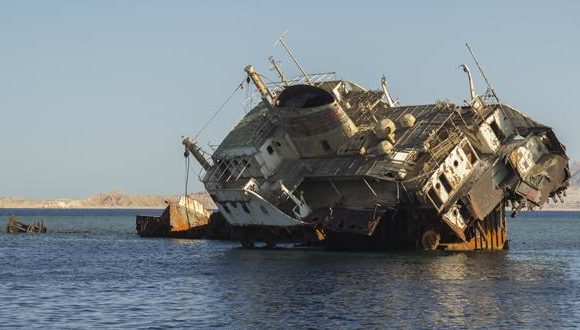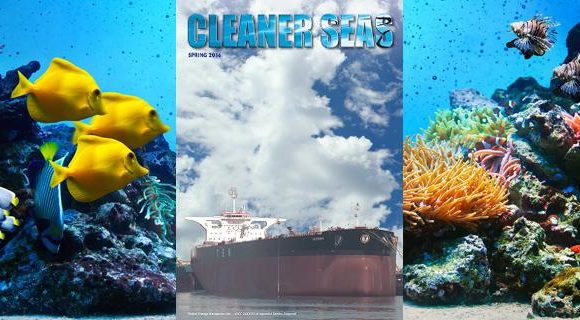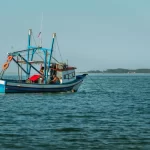Orkney Islands: Where Sustainability Meets Innovation in Island Ports

There is a lot going on in Orkney. Well known for punching above its weight in the marine renewables sector the island archipelago has 5,000 years of history and innovation behind it. Part of the success is the strategic location between the North Sea and Atlantic Ocean at a crossroads of international shipping highways. The other is the natural assets that have served Orkney so well – the largest natural harbour in the Northern Hemisphere at Scapa Flow, some of the fastest tidal streams in the world and a lot of wind, ideal for positioning Orkney as a hub for the future huge projects planned in and around the Orkney marine environment.
As the largest and busiest local authority owned port in Scotland, Orkney Harbours has a pivotal role in ensuring the development of its infrastructure to meet the needs of these projects, as well as provide a platform for a decarbonised future. The current work portfolio sees Scapa Flow as a base for a range of Ship-to-Ship transfers of oil and gas products, a safe anchorage for platforms, as well as the Flotta Oil Terminal.
“Even though we are seeing a reduction in the product coming through the Flotta Terminal, oil and gas is currently an important part of our work so the need to have a strong diversification strategy in other markets is vitally important” says Paul Olvhoj, business development manager at Orkney Harbours.
“We are focusing on the future and that is offshore wind, which has a huge potential for Orkney.”
Paul stresses that having the plans to ensure this potential is not missed is a key part of his work and at the end of last year Orkney Harbours launched Orkney Future Ports, one of the most significant marine energy infrastructure programs seen in Scotland.
“We want to build on the rich history of innovation, abundance of natural resources and worldwide reputation to position ourselves as a hub for the assembly and integration of both fixed and floating offshore wind structures, develop our existing piers and harbours to support future generations of ferries and vessels, and ensure an improvement across all of our infrastructure” he continues.
The main projects covered by Orkney Future Ports are the potential brand new facility in Scapa Flow, Scapa Deep Water Quay, and the extension of the existing Hatston Pier outside Kirkwall. Both of these projects are in the planning process and Paul adds that there is still a lot of work to do to get the projects into construction.
The funding of these projects is still a big question to be answered. As the smallest local authority in Scotland, it is asking a lot to make a large financial decision, the largest ever made by the council, to green light a project before the completion of contractual agreements with end users. The limited number of port facilities with the required laydown, quay length and water depth is a critical risk to the completion of offshore wind developments. Ports are being asked to take on the huge risk of substantial investment before final financial decisions are made to move the offshore projects forward, so we ask that both the UK and Scottish governments recognise not only the need for financial support but also the vital importance of ensuring the projects have local content.
But it is not only these two big projects that Orkney Harbours is working on. We have plans for a future fuels hub at our site at Hatston for the storage and bunkering of zero emission fuels that is part of the cross governmental Islands Deal and received funding from the UK government as part of their Zero Emission Vessel and Infrastructure Fund (ZEVI). This will see two electric vessels running ferry routes around Orkney over a 3-year period in a partnership between the council, Artemis Technologies and the European Marine and Energy Centre (EMEC). Both projects are aimed at stimulating and developing economic growth as well as taking further steps on our path towards decarbonisation.
Orkney Harbours currently operates 29 piers and harbours around the archipelago and the continued maintenance of them is a large responsibility to undertake as both the infrastructure – and the vessels using them – age. Another task moving forward is building on the success of the Hydrogen projects developed by EMEC to look at suitable ferry replacements and the infrastructure they require.
The Busiest Cruise port in the UK
Outside of the energy sector Orkney is the busiest cruise day visit destination in the UK with over 200 cruise vessels calling in 2023. This brought over 200,000 passengers into Orkney and an estimated £15 to £17 million income to the local economy. With tourist destinations such as the Heart of Neolithic UNESCO World Heritage Centre and Italian Chapel within a short drive from the main cruise berth at Hatston, Orkney is a very popular call for a range of itineraries.
2023 was a record year for cruise and the benefit to the Orkney economy is huge. Of course, it brings challenges in large numbers of visitors and the impact they can have on a small group of islands. The harbours are working to track this impact and working with global experts set up a measuring baseline data system that will allow Orkney to see what effect the visitors are having on the environment and, most importantly, what measures are being taken by the operators to mitigate these impacts.
Passengers and freight are also a critical part of business for Orkney Harbours and the continued success of the Northlink connections to Stromness and Hatston Pier are vital. Planning for the future ferries that service the lifeline links, as well as the internal Orkney Ferries fleet, is critical to ensure that Orkney Harbours have the right infrastructure that is sustainable.
Community Collaboration
Sustainability isn’t a solo act; collaboration is key. Orkney Harbours work closely with local communities, businesses, and research institutions. Together, they share knowledge, explore innovative solutions, and ensure everyone benefits from the green transition. Imagine a united front, where islanders and port authorities work hand-in-hand to create a sustainable future for their beloved archipelago.
These are just a few examples of the exciting initiatives making our Harbours pioneers in eco-friendly practices. It’s not just about ticking boxes; it’s about genuine commitment to preserving the islands’ unique environment and building a thriving future for generations to come.
Business Development Manager
Marine Services
Harbour Authority Building
Scapa, Orkney
KW15 1SD
Tel: 01856 873636 Ext 3610
Mob: 07595 091 393
E-mail paul.olvhoj@orkney.gov.uk















